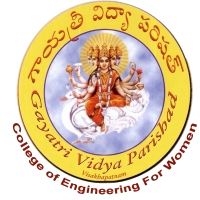2.2.1. The institution assesses the learning levels of the students and organises special Programmes for advanced learners and slow learners
The college has well-planned strategies that are planned and implemented from time to time to address the issues pertaining to the diversity in students’ learning levels.
The assessment of learning abilities of students is carried out in stages. Some of them are:
- Initial cues of learning abilities
- Assessment through orientation/ Induction programs
- Stratification of students through performance in internal assessment and the continuous follow-up
- Further identification/ stratification through participation in class/ lab work/ quizzes
The Initial learning abilities of the students admitted in the college are obtained from their performance in the qualifying examination, entrance examination. This is followed by a rough assessment of the performance in the induction program.
The stratification into slow, average and fast learners begins with the internal assessment/ mid examinations. This is followed by a series of steps i.e continuous follow-up till the course completion to bring the slow learners at par with the advanced learners. This is brought about through the concerted efforts of advanced learners, faculty, parents and Heads of the departments.
Some of the steps taken to identify and improve students’ learning capabilities are outlined below:
Orientation Program
The Orientation program provides an opportunity for the faculty to identify the capabilities of the heterogenous student community. After the students’ admission into the college, a two-week orientation program is conducted to introduce students to Engineering aspects. In these sessions, awareness is created on the ethos of the college and help them adjust to the new environs. During these interactive sessions, the student’s latent talents are identified and honed during their period of study.
During the Induction program for newly admitted students, a number of activities that include expert talks, creative activities, sports and games etc. are conducted.
A one-week induction program for Lateral entry students i.e., the diploma holders into the Second-year undergraduate course is conducted to enable them to cope with the prerequisite course work that is needed for them to catch up with the requirements of their chosen area of study.
Methods for identifying learners’ capabilities
In addition, the students are continuously assessed based on their participation in the class, performance in the class tests, internal exams and lab sessions.
Further, the mentoring system also aids in recognizing the strengths/ weaknesses of the students.
Steps to improve capacities of slow learners
After the analysis of the performance of students in the class tests, internal examinations and also based on feedback from the mentors
- Remedial class sessions are conducted for the benefit of the slow learners.
- Peer – learning is encouraged by pairing slow learners with good learners.
- Soft skills training is given special emphasis to students from rural background
- Mind mapping and mentor- mentee follow up is carried out to improve the performance of slow learners.
Support for advanced learners
- The advanced leaners are encouraged to publish papers in Journals, college’s technical magazines and e-magazines
- Special training for competitive exams like GATE is given
- Toppers are made the class representatives, Team leaders for term/ student projects.
- Toppers of each year are awarded prizes/Merit Certificates/Endowment, Cash prizes. In addition, branch toppers are also given prizes for their meritorious performance at Annual events.
- The names of Top performers are displayed on the college website
- Participation in Hackathons
| Additional Information |
2.2.2. Student- Full time teacher ratio (Data for the latest completed academic year)
Response: 16:1
| Additional information |
